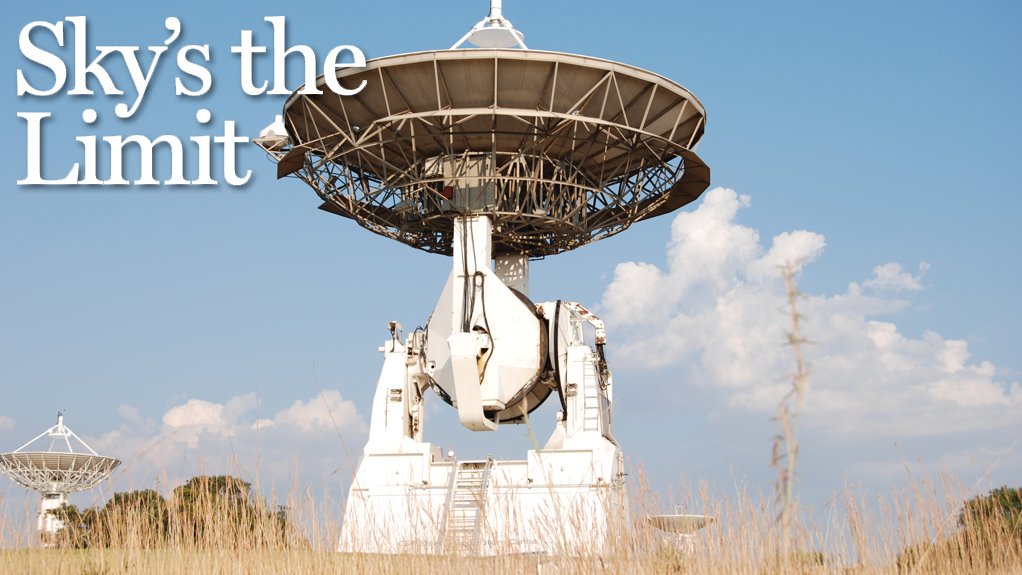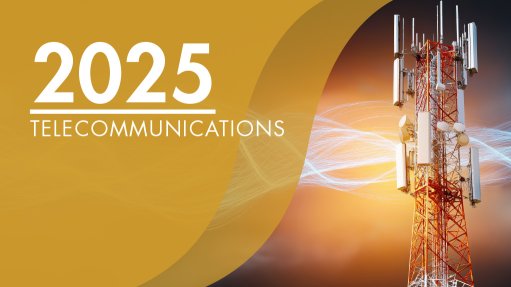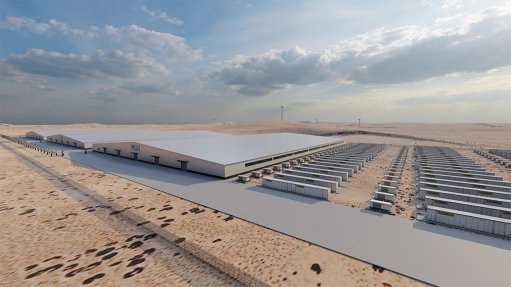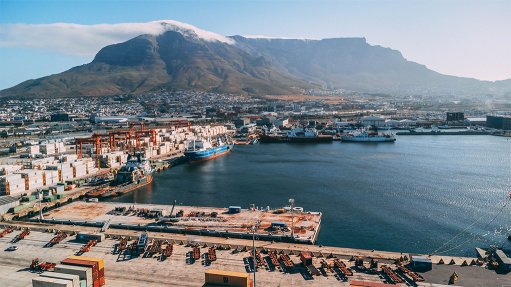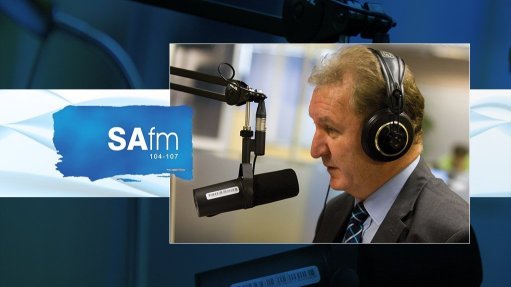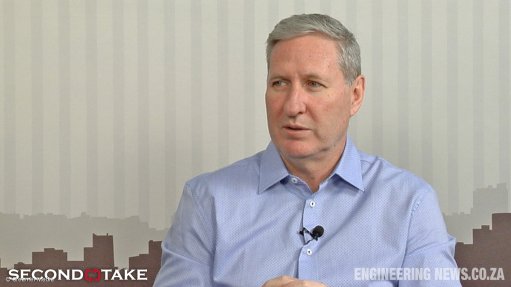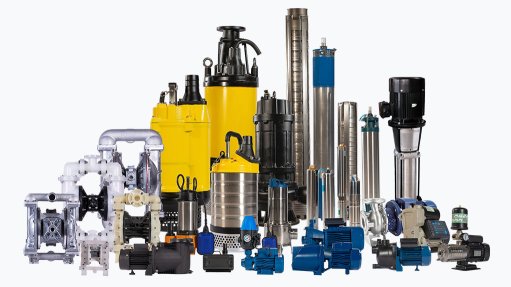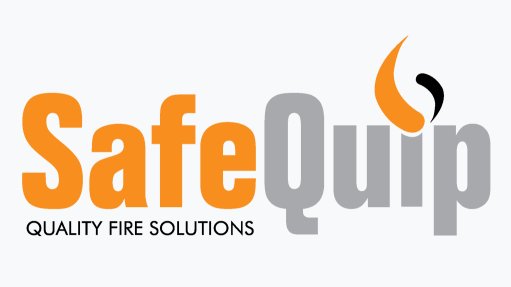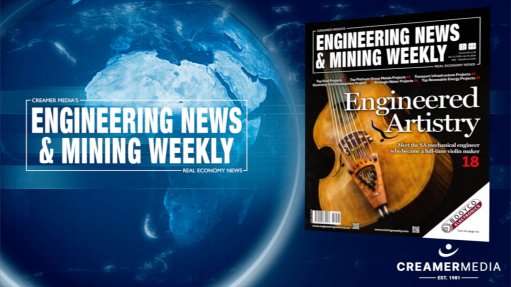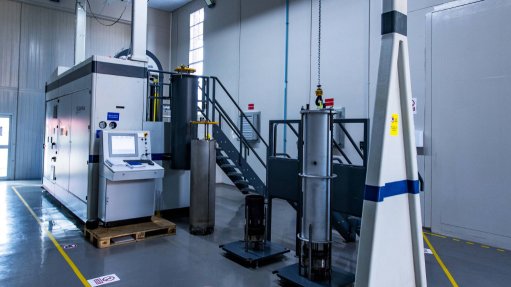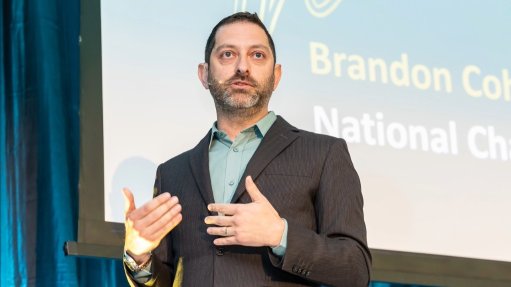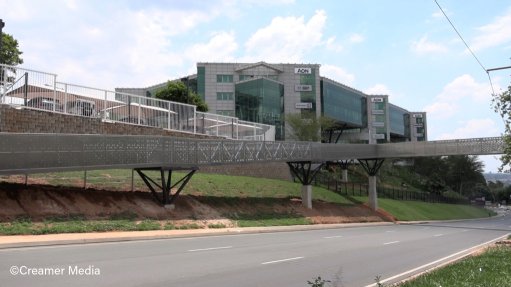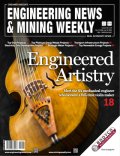South African National Space Agency outlines ambitious five-year plan
This year is a red-letter year for the South African National Space Agency (SANSA), with the climax arguably being its hosting of the Sixth Space Economy Leaders Meeting (SELM6), at Kleinmond in the Western Cape, at the start of September. This was in preparation for the G20 Summit, that will be held in Africa for the first time, in Johannesburg, in November.
“The hosting of the G20 Summit on African soil for the first time is a historic moment, and to have SELM6 in South Africa was equally significant, not only for our country but for the continent as a whole,” highlights SANSA CEO Humbulani Mudau, in an exclusive interview with Engineering News & Mining Weekly. “SELM is a strategic and critical platform that fosters global collaboration, knowledge sharing, and collective dialogue on the role of space technologies and innovations in addressing urgent global challenges. The G20 SELM6 in South Africa was centred on leveraging space technology as a driver for inclusive and sustainable economic development.”
It is essential for South Africa, and wider Africa, to participate in, and contribute to, SELM, to ensure that South African and African perspectives and priorities, as well as innovations, are integrated into the worldwide space economy agenda. To this end, SANSA invited the heads of African space agencies to meet directly with the G20 space agencies (which include the world’s leading such agencies).
“SELM6 notably boosted international interest in collaborating with SANSA,” he reports. “This was clear in the growing number of strategic discussions with global partners across various focus areas, including space weather, Earth observation, lunar exploration, space science and technology, and the development of vital space infrastructure. These engagements demonstrate recognition of SANSA as a trusted partner and Africa’s strategic gateway for space collaboration.”
Strategic Partner
Another highlight of the year was the adoption, on April 1, of SANSA’s five-year Strategic Plan (2025–2030). The aim of this strategy is to both reinforce South Africa’s position in the global space community and to provide concrete benefits for both the country and the continent. It will position SANSA as a strategic national asset as well as a strategic African and global partner in the development of the future space economy.
The new Strategic Plan has six outcomes. These are – increasing national space capabilities; enhancing space-relevant knowledge necessary for development; increasing South Africa’s share in the global space market; augmenting international collaborations and partnerships; using space applications to support socioeconomic development; and impelling Africa’s involvement in the global space agenda.
SANSA’s priorities over the next 12 months included increasing national capabilities in space science and technology and satellite infrastructure; increasing space-relevant knowledge and decision support tools, to support national development; increasing South Africa’s share in the global space market; and, increasing the country’s human capacity in space science, technology and engineering, by means of targeted skills programmes.
Over the next five years, the agency’s priorities are to deliver cost-effective and reliable space-based services and information, using locally developed satellites and systems; using strategic space applications to support both government and the economy; and enabling and promoting a sustainable local space industry that, in turn, pushes innovation, competitiveness and job creation. The overarching aim is to advance South Africa from being an emerging space nation to the status of an intermediate space nation – that is, one that develops its own space infrastructure and applications.
Divisional Developments
SANSA receives an annual Parliamentary grant of about R350-million, but also generates additional revenues, mainly from contracts awarded by international partners to SANSA Space Operations. In the 2024/2025 financial year, these additional revenues totalled more than R160-million. Space Operations is one of the agency’s four divisions, the others being Earth Observation, Space Science, and Space Engineering.
SANSA Space Operations provides ground-based launch support services, and telemetry, tracking and control (TT&C) services to international clients, both space agencies and space companies. It could also provide mission control for future South African satellites. Currently, it operates from one site, at Hartebeesthoek, in Gauteng, west of Pretoria, where it hosts more than 100 space assets on behalf of its international partners, which include pretty much all the world’s major space agencies.
But, in partnership with the US National Aeronautics and Space Administration (Nasa), it is developing a second site, at Matjiesfontein in the Western Cape. This will form part of Nasa’s new Deep Space Network (DSN), to support future crewed deep space missions, to the Moon and even Mars. The development of the Matjiesfontein site has made significant progress; the public participation process for the rezoning of the land has been successfully concluded, a municipal water supply has been connected, and erection of the perimeter fence is under way. Good progress is being made is securing a dedicated power supply for the facility. SANSA is also marketing Matjiesfontein as an ideal site for deep space facilities for other space agencies.
“The DSN project will transform Matjiesfontein in multiple ways,” points out Mudau. “The robust communication infrastructure being developed for the station will also enhance the town’s overall infrastructure, offering reliable connectivity to support education, businesses, and community services. Strategically positioned near the N1 highway, the ground station will include a public visitor centre designed to raise awareness of space science while promoting space tourism and local entrepreneurship through catering, retail, and educational activities.”
SANSA Earth Observation (EO), based in Pretoria, is focused on analysing EO data and developing usable products derived from this data, for mainly local customers, often national, provincial and even local government agencies. It is currently moving forward with a suite of decision-support tools, which integrate EO data, 4IR technologies, and social and population data. These tools are delivered by means of a central user interface. They are focused on key matters such as water resource management, air quality, and disaster response, and increase the effectiveness of evidence-based planning and policies.
In order to stimulate the downstream EO data sector in South Africa, SANSA has launched the New Earth Observation Frontiers Enterprise Innovation Support Fund (NEOFrontiers EISF). This has already supported eight startups and small, micro and medium enterprises, with another seven startups to be funded.
SANSA Space Science, based in Hermanus in the Western Cape, is primarily but not exclusively focused on space weather – this is, events on the Sun, such as solar flares, coronal mass ejections, geomagnetic storms, and the solar wind – and the impact they have on Earth and human technology, not only in orbit but also on the surface of the planet. It has the only 24/7 space weather forecasting centre in Africa.
However, SANSA Space Science is also involved in the Africa2Moon project (to set up an African-developed remotely operated low-frequency radio telescope array on the Moon). A four-antenna low-frequency array was recently set up on Marion Island by SANSA, to undertake sky mapping at low frequencies, but also to act as a prelude for the Africa2Moon project. Phase 1 of Africa2Moon will involve the deployment of four antennas, transported by a Chinese spacecraft.
SANSA Space Engineering, also based in Pretoria, is focused on the development of South African satellite design, assembly, integration and testing. It has achieved significant progress towards completing the EO-Sat1 national EO satellite programme. Space Engineering is also heavily involved in the Houwteq Assembly, Integration and Test (AIT) facility at Grabouw, in the Western Cape.
“SANSA has not taken full ownership of the Houwteq facility but is actively exploring a joint operating model with key stakeholders to ensure the long-term sustainability of this national asset,” explains Mudau. “In the meantime, SANSA has commenced upgrades to the Houwteq AIT facility to support the growth of domestic satellite manufacturing. Project activity on site has increased significantly, with dedicated teams managing day-to-day progress. According to the project plan, implementation is currently at 56% completion, with priority given to the facilities most critical for SANSA’s satellite build programme.”
Domestic Space
SANSA sees the support of the local space industry as one of its core functions.
In addition to the abovementioned initiatives, SANSA also actively provides showcasing platforms for the products and services offered by South African companies.
“A prime example is the South African Space Pavilion at the International Astronautical Congress (IAC) 2025 in Sydney, Australia,” he cites. “By bringing together South African companies under a national banner, SANSA ensures that our domestic industry gains international exposure, builds partnerships, and accesses new markets. Over the past two years, SANSA’s sustained investment in enabling local participation at IAC has directly contributed to the visibility, credibility and growth of South Africa’s space industry.”
SANSA is also actively promoting space awareness among the public, and especially learners and educators.
The agency is finalising its Space Education Strategy. This will go beyond just raising space awareness, but will focus on incubation programmes for space and high-tech businesses, to nurture entrepreneurship.
Long-term Ambitions
For the longer term – that is, ten and more years into the future – SANSA has three major ambitions. One is the development of advanced radar and optical tracking systems, to give South Africa Space Situational Awareness and Space Traffic Management capabilities. These would allow the country to monitor and manage orbital activity, track space debris and predict its movement, thereby reducing risks of collision, and so supporting the long-term safety and sustainability of global space activities.
A second ambition is to make significant investments in the development of EO and Earth intelligence satellite constellations and decision support tools. This would involve the integration of EO data with 4IR technologies.
The other ambition is nothing less than human spaceflight capability, through the training of local astronauts. “While South Africa does not yet possess human spaceflight capability, SANSA envisions participation in international human spaceflight missions,” explains Mudau. “This will be pursued through partnerships with established spacefaring nations to build expertise in human-rated spacecraft and astronaut training. The Human Flight Partnership Agreement is a key initiative that will prepare the first generation of South African astronauts, enabling scientific research, innovation, and global collaboration in space exploration.”
Article Enquiry
Email Article
Save Article
Feedback
To advertise email advertising@creamermedia.co.za or click here
Comments
Announcements
What's On
Subscribe to improve your user experience...
Option 1 (equivalent of R125 a month):
Receive a weekly copy of Creamer Media's Engineering News & Mining Weekly magazine
(print copy for those in South Africa and e-magazine for those outside of South Africa)
Receive daily email newsletters
Access to full search results
Access archive of magazine back copies
Access to Projects in Progress
Access to ONE Research Report of your choice in PDF format
Option 2 (equivalent of R375 a month):
All benefits from Option 1
PLUS
Access to Creamer Media's Research Channel Africa for ALL Research Reports, in PDF format, on various industrial and mining sectors
including Electricity; Water; Energy Transition; Hydrogen; Roads, Rail and Ports; Coal; Gold; Platinum; Battery Metals; etc.
Already a subscriber?
Forgotten your password?
Receive weekly copy of Creamer Media's Engineering News & Mining Weekly magazine (print copy for those in South Africa and e-magazine for those outside of South Africa)
➕
Recieve daily email newsletters
➕
Access to full search results
➕
Access archive of magazine back copies
➕
Access to Projects in Progress
➕
Access to ONE Research Report of your choice in PDF format
RESEARCH CHANNEL AFRICA
R4500 (equivalent of R375 a month)
SUBSCRIBEAll benefits from Option 1
➕
Access to Creamer Media's Research Channel Africa for ALL Research Reports on various industrial and mining sectors, in PDF format, including on:
Electricity
➕
Water
➕
Energy Transition
➕
Hydrogen
➕
Roads, Rail and Ports
➕
Coal
➕
Gold
➕
Platinum
➕
Battery Metals
➕
etc.
Receive all benefits from Option 1 or Option 2 delivered to numerous people at your company
➕
Multiple User names and Passwords for simultaneous log-ins
➕
Intranet integration access to all in your organisation



